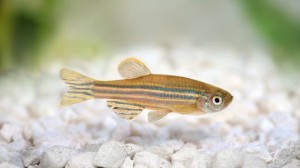Researchers at Oregon State University, led by Professor Taifo Mahmud, have discovered that zebrafish are able to produce a chemical, called gadusol, that is crucial in UV radiation protection. They managed to express the genes for gadusol synthesis in yeast which suggests possible commercialisation of the compound in the production of sunscreen pills and lotions.
Animals inhabiting the upper ocean levels or reefs are constantly subject to intense sunlight. Gadusol protects the marine organisms from the UV rays in the light which increase the rate of DNA mutations. The compound was found in the eyes of the mantis shrimp, sea urchin eggs and sponges, as well as zebrafish.
Scientists previously believed that fish obtained the chemical through their diet or a symbiotic relationship with bacteria. However, while studying similar compounds that are used in the treatment of diabetes and fungal infections, the researchers at Oregon State University discovered that the enzyme EEVS common to all of them was present not only in bacteria, but in fish and vertebrates as well.
They expressed the zebrafish gene in E.coli, and then in yeast to confirm its mechanism. EEVS forms complexes with another protein, whose synthesis is regulated by exposure to light, to produce gadusol. The expression of the gadusol gene in yeast implies the possibility of large-scale production of gadusol for sunscreen and antioxidants in pharmaceuticals.
Professor Mahmud commented: “In the future it may be possible to use yeast to produce large quantities of this natural compound for sunscreen pills and lotions, as well as for other cosmetics sold at your local supermarket or pharmacy,”
Further studies need to be conducted to establish how gadusol is absorbed and metabolised by the body in order to ensure its efficacy and safety before it is used in the production of sunscreen pills and lotions.